Title of paper under discussion
The musician’s brain: functional imaging of amateurs and professionals during performance and imagery
Authors
M. Lotze, G. Scheler, H.-R.M. Tan, C. Braun and N. Birbaumera
Journal
NeuroImage, Volume 20, Issue 3, November 2003, Pages 1817-1829
Link to original paper (open access)
Overview
In order to investigate the differences that a musical training makes to the ‘wiring’ of a brain, this German study put two groups of violinists – amateur and professional – into an fMRI scanner, asking them 1) to tap out the first 16 bars of a Mozart violin concerto (real task) and 2) to imagine playing those bars of the concerto (imagined task). The professionals showed a more focussed, less dispersed, pattern of activation in the motor areas of the brain in both the real and imagined tasks, thereby presumably “freeing resources” for other brain pathways (somatosensory and auditory) to effect a “superior musical performance”. The auditory cortex of both groups ‘lit up’ in the real task – the musicians more so – but not in the imagined task, suggesting that musical training increases co-activation of motor and auditory systems, evident as long as one of those systems is activated.
Method
16 violinists – 8 professionals from German or Swiss orchestras and 8 amateurs – were recruited for the study. Each filled in a questionnaire detailing for how long and how intensively they had been studying the instrument.
One by one they were stationed, without their violins for reasons of space, in a functional Magnetic Resonance Imaging (fMRI) scanner and asked to ‘perform’ the first 16 solo bars of Mozart’s Violin Concerto in G major K216 in two ways: 1) by tapping out its fingering pattern, as accurately in time and space as they could, with their left hands on their chests (as if on a violin fingerboard) and 2) by simply imagining it, again as accurately and as in time as possible, and deliberately not tapping it out.
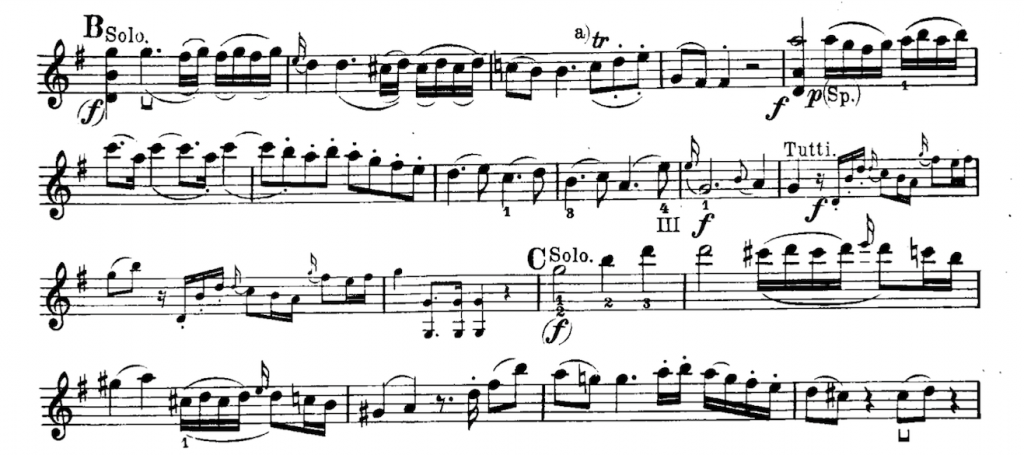
Throughout the experiment brain activity was recorded by the fMRI scanner, and left hand muscular activity was monitored by electrodes; these EMG (electromyographic) recordings were shown to the violinists during the second task as real time feedback to help them avoid involuntarily tapping out the music.
Participants were also asked to score out of 10 how vividly they imagined the music (its movements, its pitch and its rhythm) in the second task.
Results and discussion
Here is the authors’ diagram comparing brain activity of professionals with that of amateurs in both the performance task (‘Executed Movement’) and the imagined task (‘Imagined Movement’):
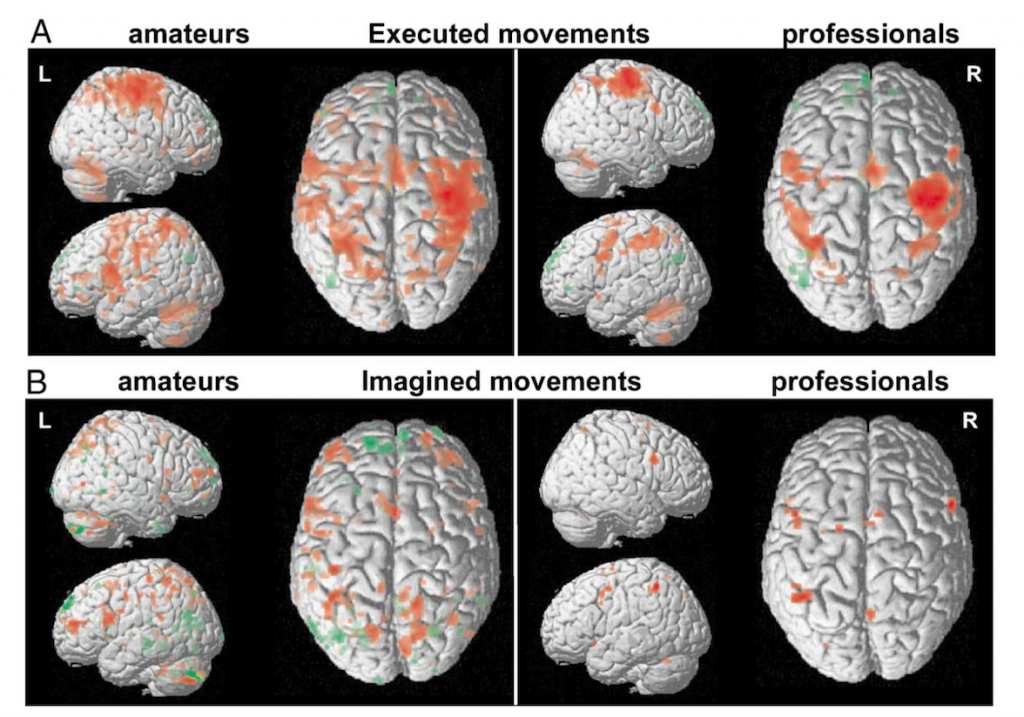
A very general look at the fMRI scans across both groups and in both tasks revealed activity in many areas of the brain, showing that musical performance, real or imagined, involves “not only the motor areas but also other functional systems such as the somatosensory, auditory, emotional, temporal, and memory loops.”
Overall the professional group displays fewer clusters of brain activity, whereas the amateur group show ” a more widely distributed” pattern of sensory/motor activity, weaker activation of the auditory area of the cortex, but increased activation in the prefrontal (planning) and basal ganglia (actions selection) regions of the brain.
Looking first at the performance (‘executed movement’) task:
1) professional violinists’ left hand movement was associated with increased activity in the contralateral (i.e. right hemisphere) primary motor cortex whereas amateurs showed increased activation in the ipsilateral (i.e. left hemisphere) primary motor cortex. (Remember that in general the right motor cortex controls the left side of the body). This finding tallies with previous studies showing that the contralateral primary motor cortex is more active in trained musicians, even to the extent of becoming enlarged if training starts early enough in life.
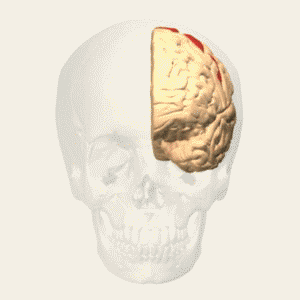
2) similarly, professional violinists’ left hand movement was associated with increased activity in the ipsilateral (i.e. left) cerebellum whereas amateurs showed increased activation in the contralateral cerebellum. (Remember this time that in general the left cerebellum controls the left side of the body). Again, this ties in with a previous finding that the cerebellum shows special development with early musical training.
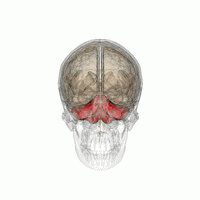
3) the amateur violinists showed increased activation in the prefrontal and basal ganglia brain regions, both of which are involved in phases of motor learning prior to automaticity, phases “which less skilled individuals might rely on before movements can be generated more automatically when required”
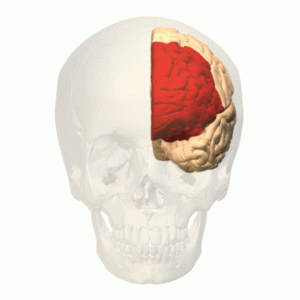
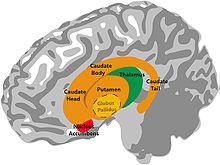
4) Although both professional and amateur violinists showed increased activity in the auditory cortex, the professionals showed especially high activity in the right auditory cortex, suggesting “increased recruitment of stored auditory associations”.
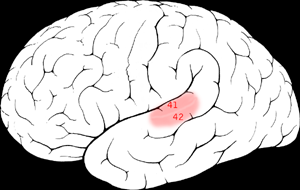
5) Whereas professionals recorded higher left hand EMG levels during the performance task, amateurs displayed higher EMG readings in their right hands, a trait commonly displayed during left hand motor tasks by less trained participants, or those still undergoing “motor learning”.
Now turning to the second part of the experiment, the imagined (‘imagined movement’) task:
1) ‘Vividness of imagined movement’ scores during the imagined task were consistently higher in professional compared with amateur violinists. Professionals also reported frequent use of such imagination in their daily musical lives.
2) Imagined movement was shown to induce activity in many of the same brain areas – e.g. motor cortex, cerebellum, parietal cortex – as did executed movement, “underlining the concept” according to the authors “that motor imagery shares the same neuronal substrates as executed movements”.
3) As in the executed movement task, professionals generally “recruited very few cerebral areas, whereas amateurs again manifested a widely distributed activation map.”
4) Two areas where professionals exhibited higher levels of brain activation were the superior left parietal and the anterior ipsilateral cerebellar regions – both of which are thought to be associated with increased motor automation.
5) The right primary auditory cortex was not activated in the imagined movement task, in the professional or the amateur group. “This result” says Lotze “leads us to hypothesize that primary motor and auditory areas become tightly coupled with executed activities during musical training. When one primary area is activated, the other also co-activates.” But “in the absence of motor execution, these auditory processes are not recruited”.
The paper concludes by saying: “In summary, this study has sought to investigate the neural activity manifested during executed and imagined musical motor performance in professional and amateur violinists. The findings are consistent with previous studies and highlight the view that prolonged musical (or motor) training is associated with enhanced efficiency, reduced effort, and increased spontaneity and flexibility in skill [……] In particular, it has shown that musical accomplishment is manifested in a cortical network that seems to originate from a more diffuse network [……] before becoming more refined and circumscribed with practice. Furthermore, even though the primary motor and auditory cortices may play the most important role in highly overtrained musical performance, they have been shown not to be activated during imagined musical performance.”
Coda
Wolfgang Amadeus Mozart – Violin Concerto No. 3 in G major, K. 216
Arthur Grumiaux – violin, London Symphony Orchestra (Colin Davis)